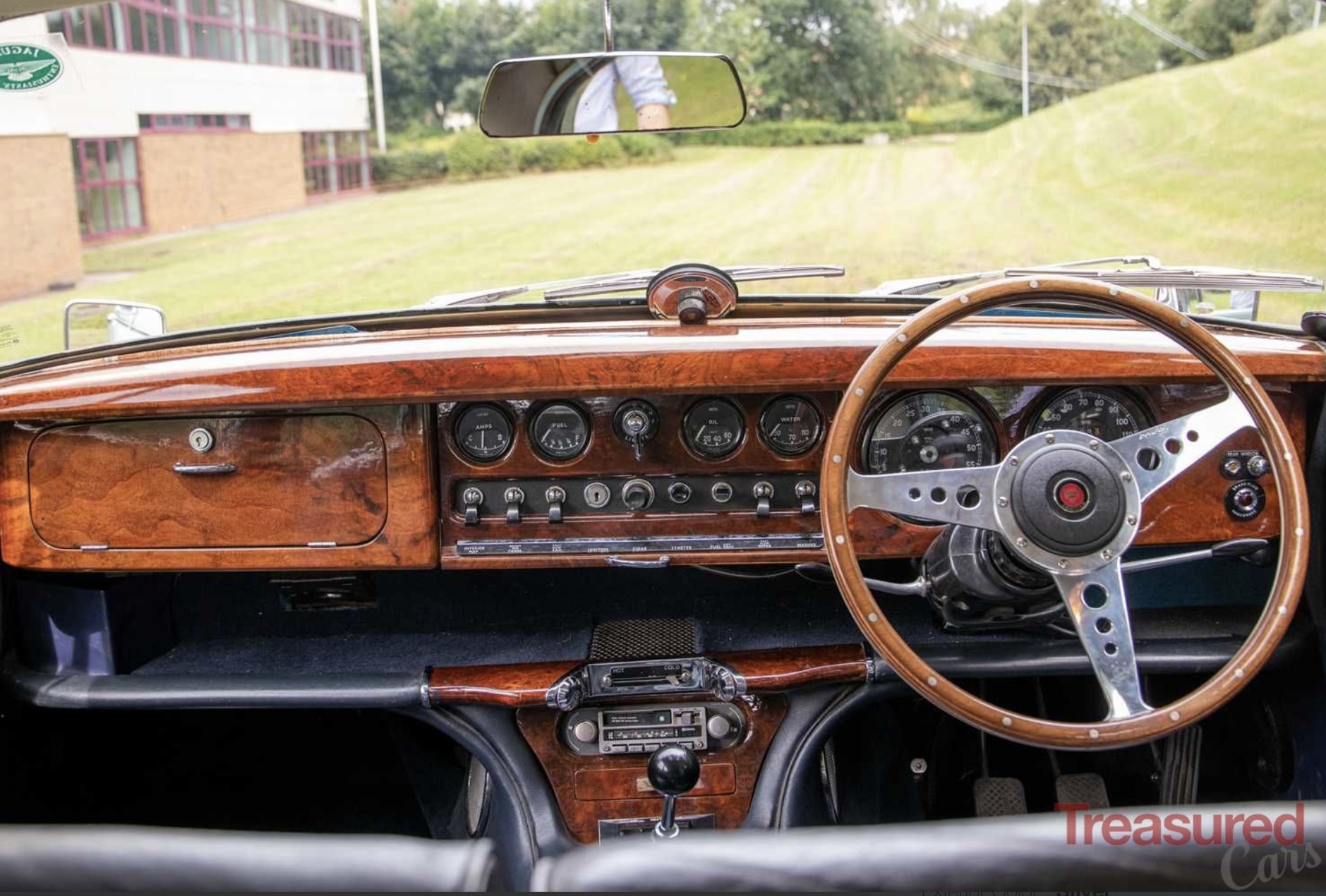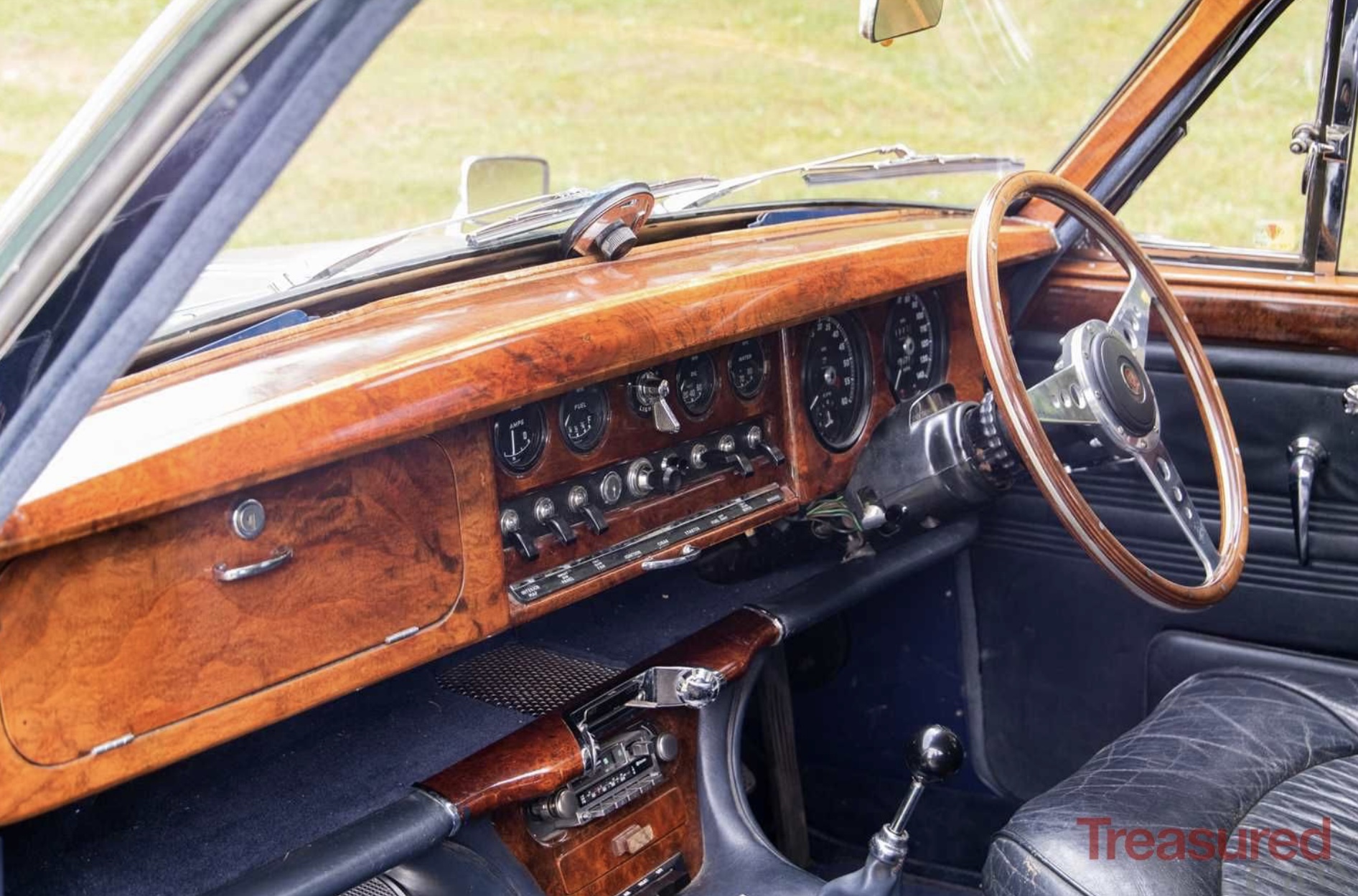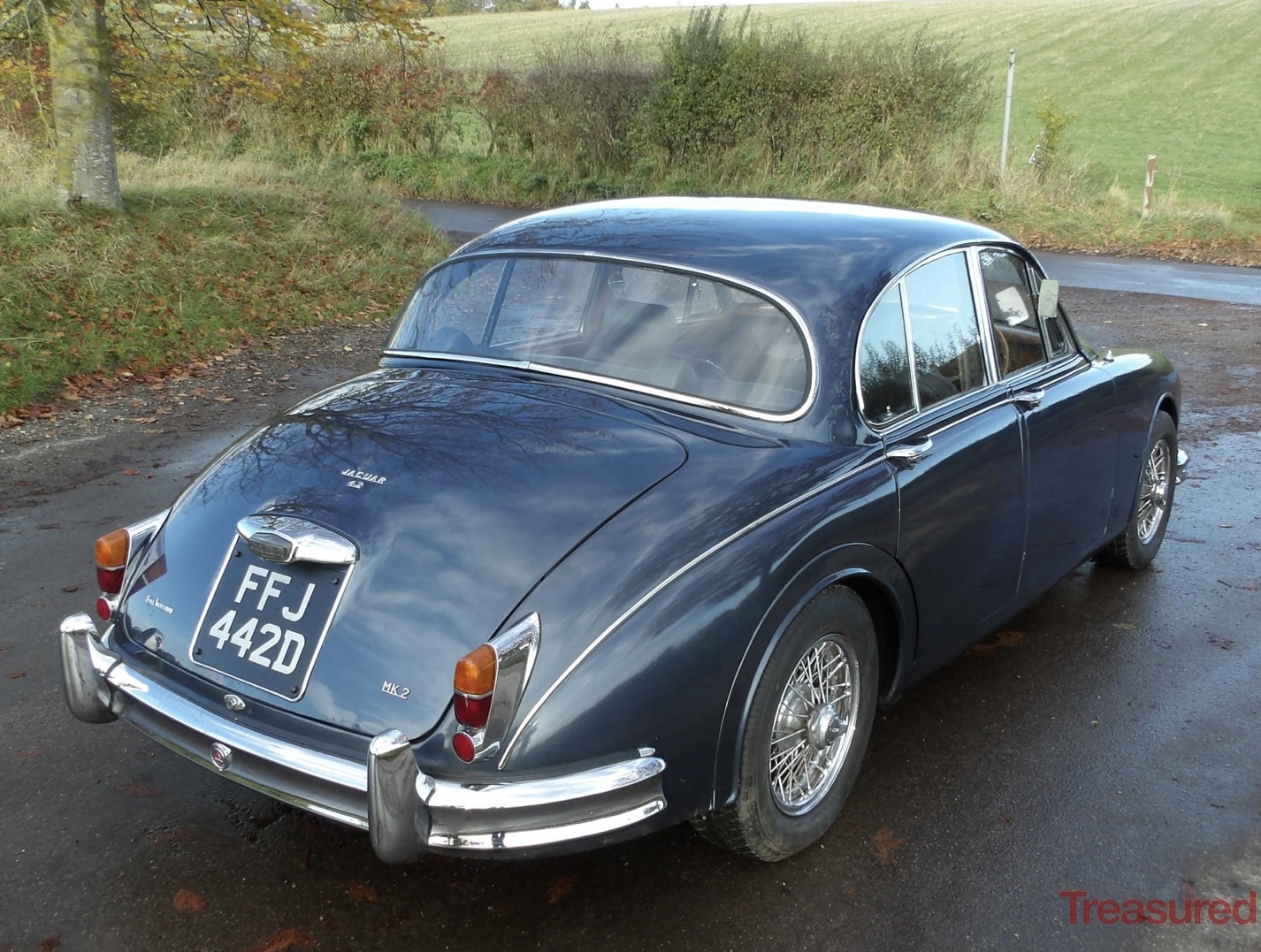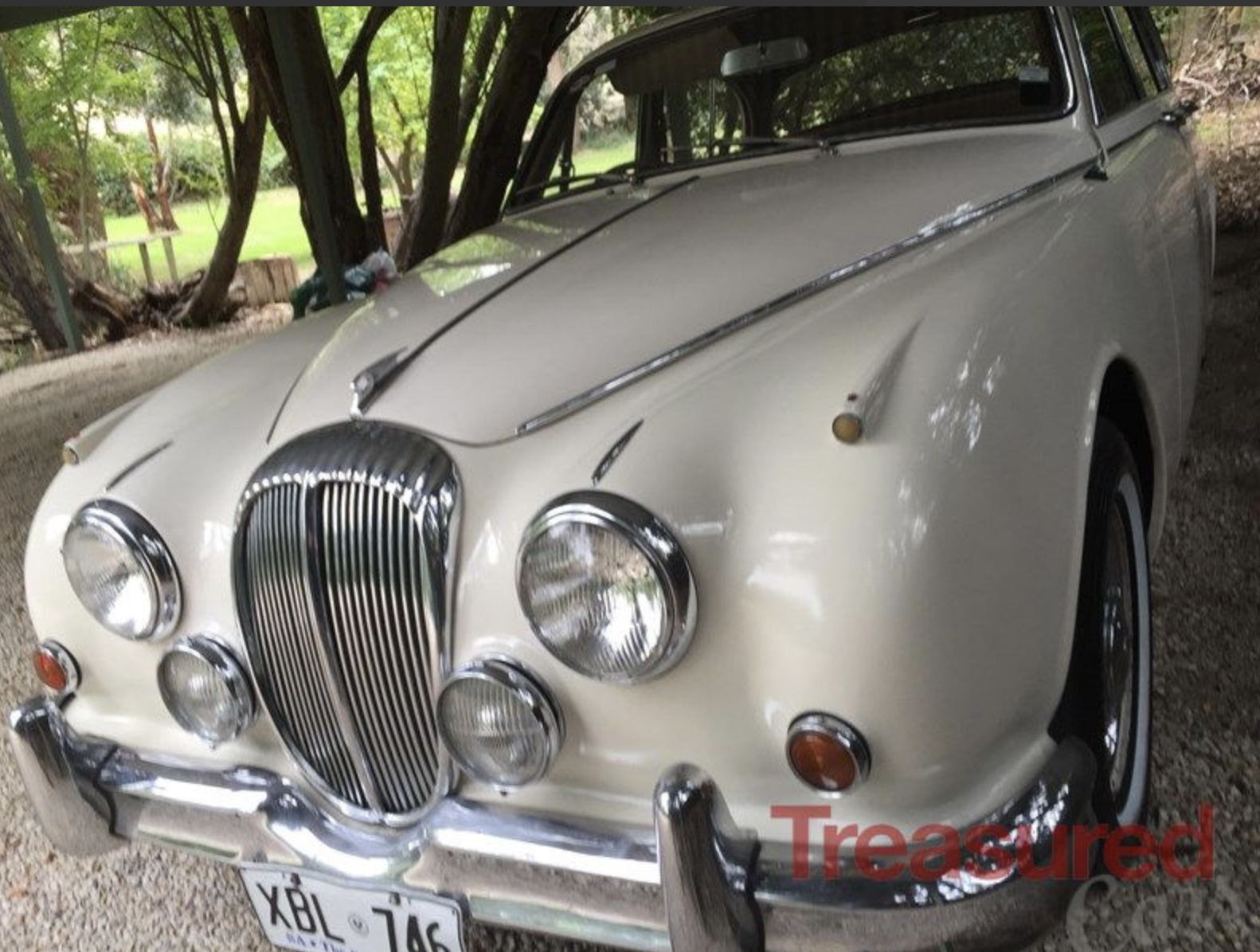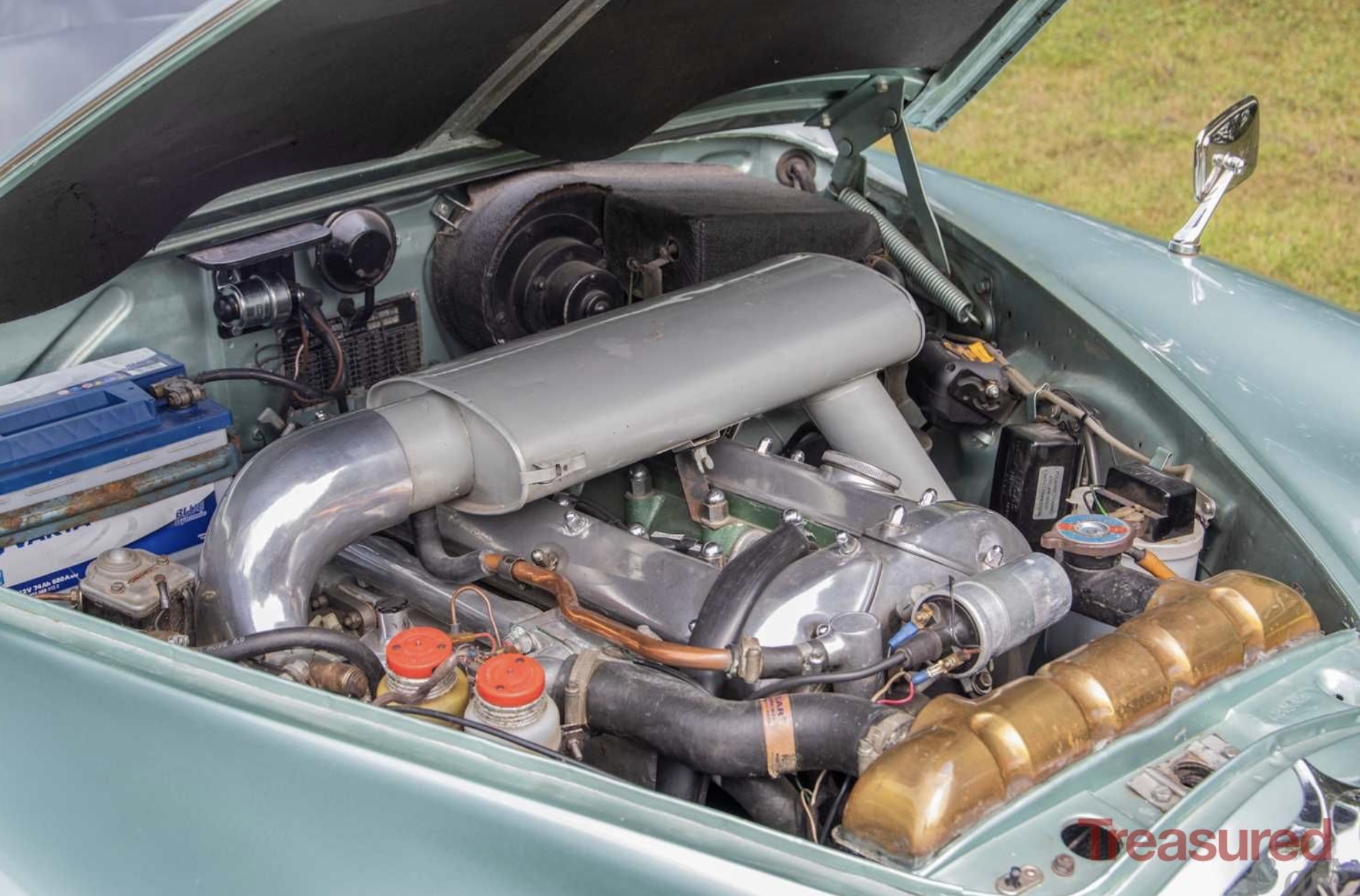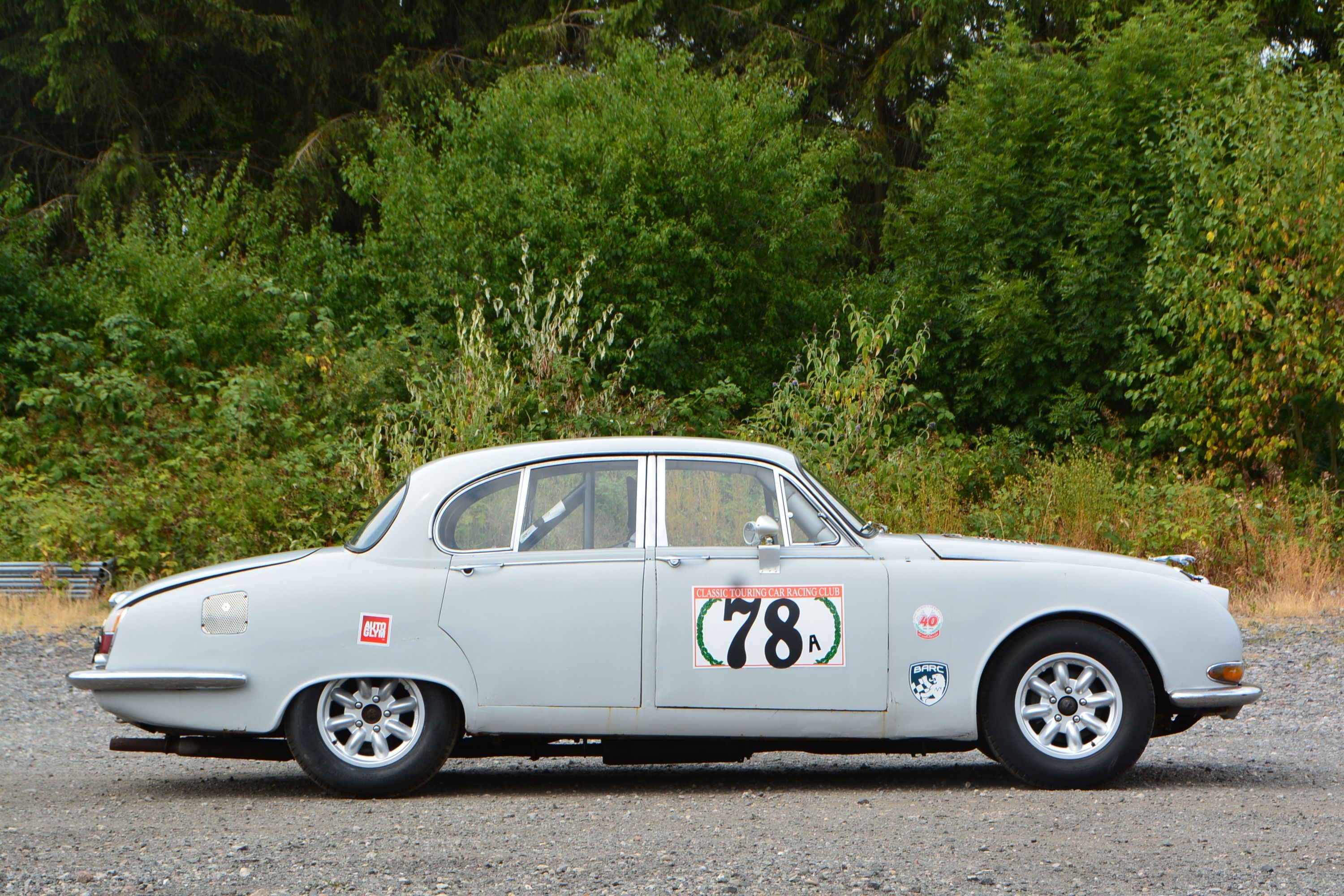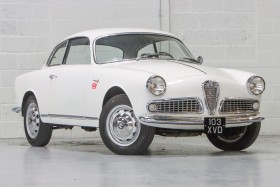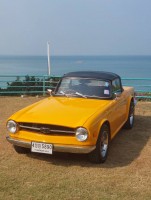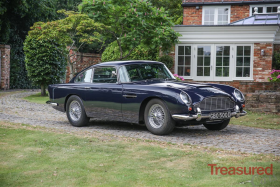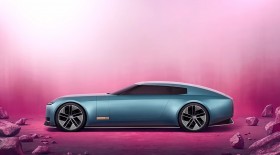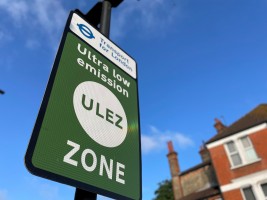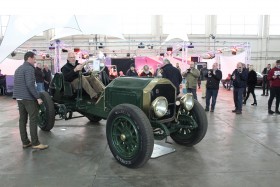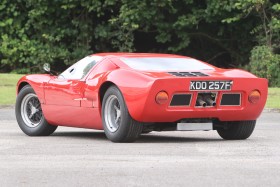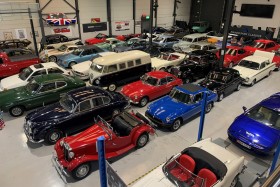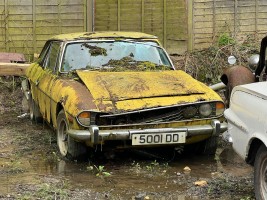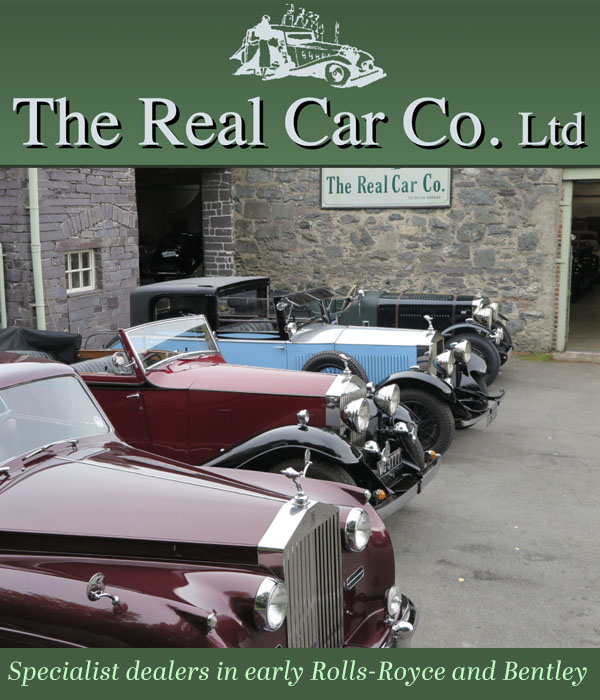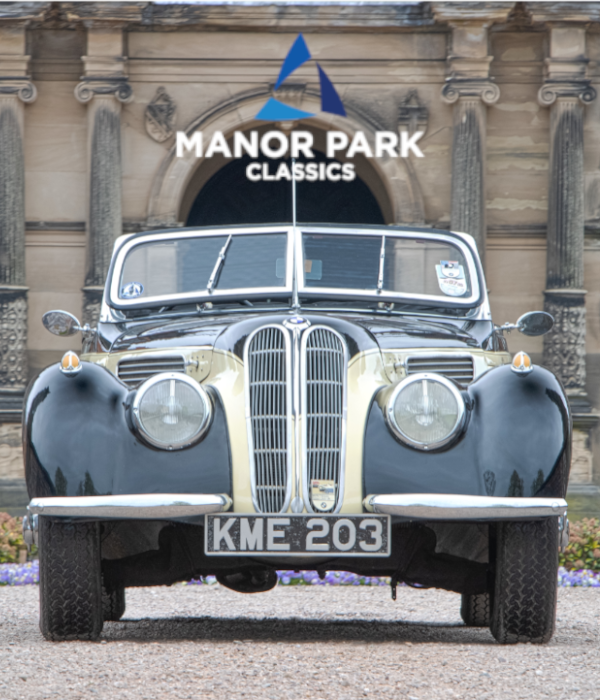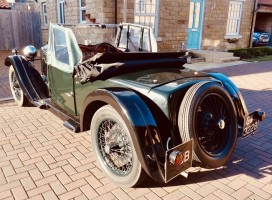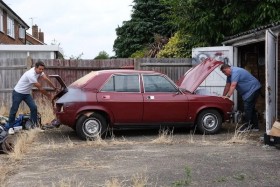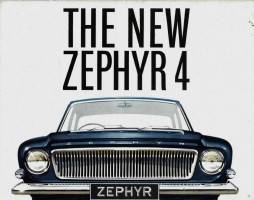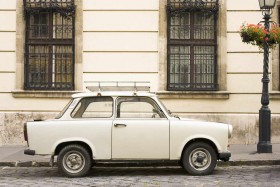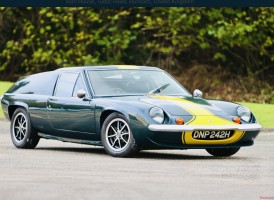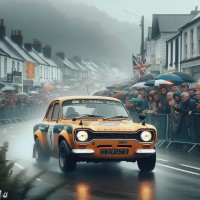jaguars s type the ‘get away car’
Cops & Robbers car of choice
By: George P Teagal Fri, 26 Jan 2024
Reviews
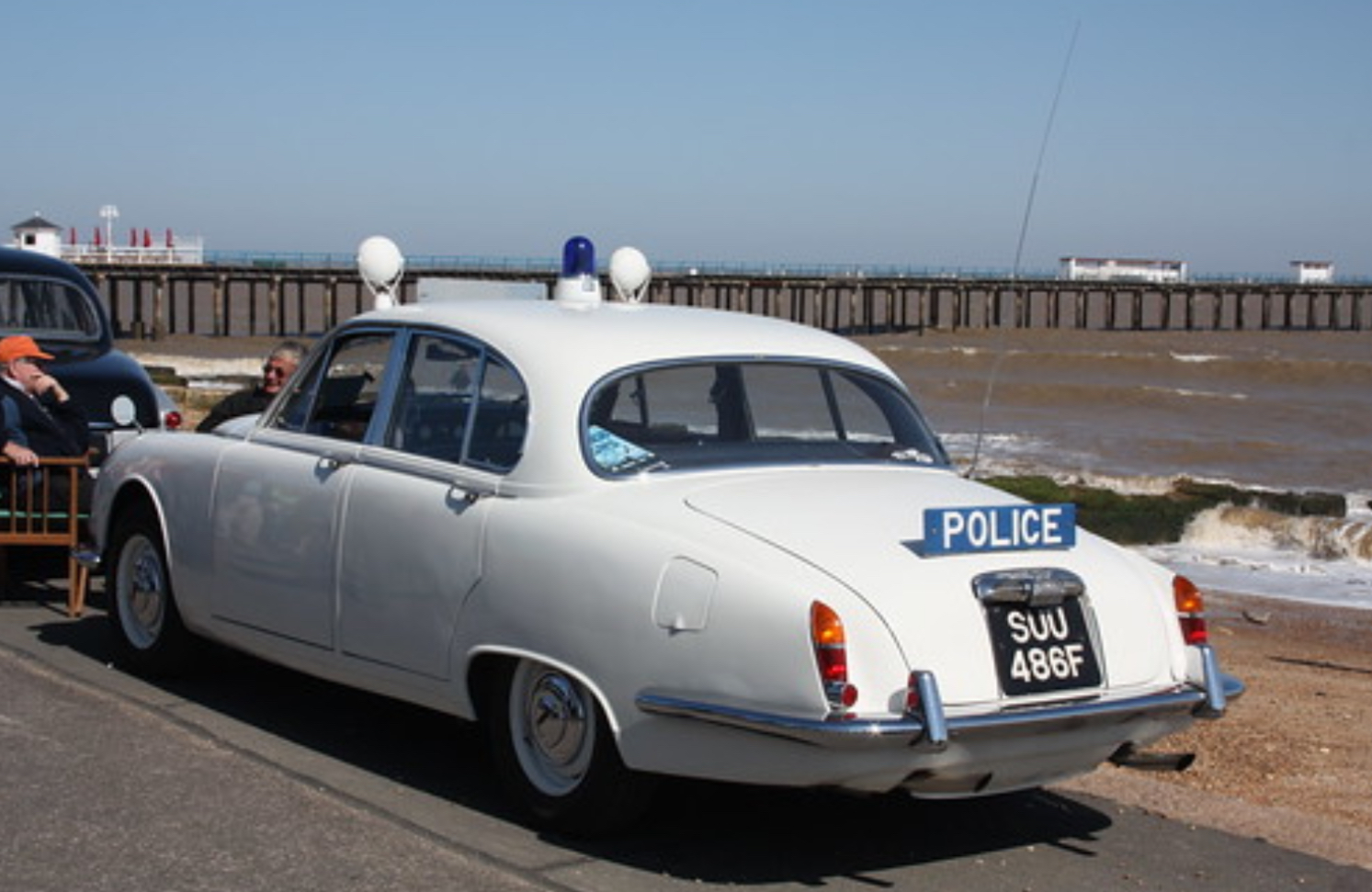
Jaguar has a long and illustrious history in motorsport with the evolution of race technology finding its way in to the road cars. Following the huge racing success of the 1950’s with the XK120, C-Type and D-Type, sports cars, the 1960’s followed with the launch of the incredibly successful E-Type, (XKE). But aside from the E-Types, this was a time when Jaguar looked away from the race track and began to focus more on its brand as a luxury saloon car manufacturer. In less than a decade Jaguar evolved from the MK1, compact saloon and the bigger MK lV flag ship saloon, to the MK 2, and MK 10, culminating with the launch of the ground breaking XJ range in 1968.
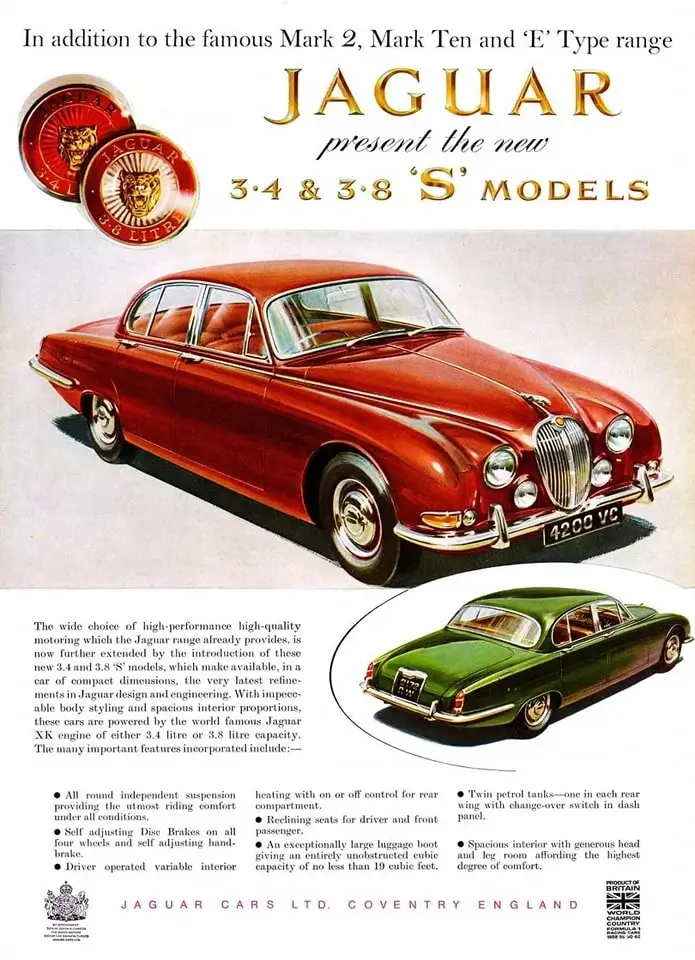
The Compact Saloons
The Jaguar MK 2 was launched in 1959, replacing the aging MK 1, and ran until 1966. the Daimler V8 21/2 litre & V8 250, ran from 1962-69, and the S-Type 1963-68. The 420 Saloon ran from 1966-68 and the Jaguar 240 & 340, 1967-69.
The compact saloon range, was expanded in 1963 with the introduction of the S-type models. Based on the Mark 2 monocoque, the rear was redesigned to accommodate independent rear suspension, which allowed for a larger boot area, the front wings were also modified along with trim. Internally the S got an upgraded luxury interior over the Mark 2 with new seating and trim.
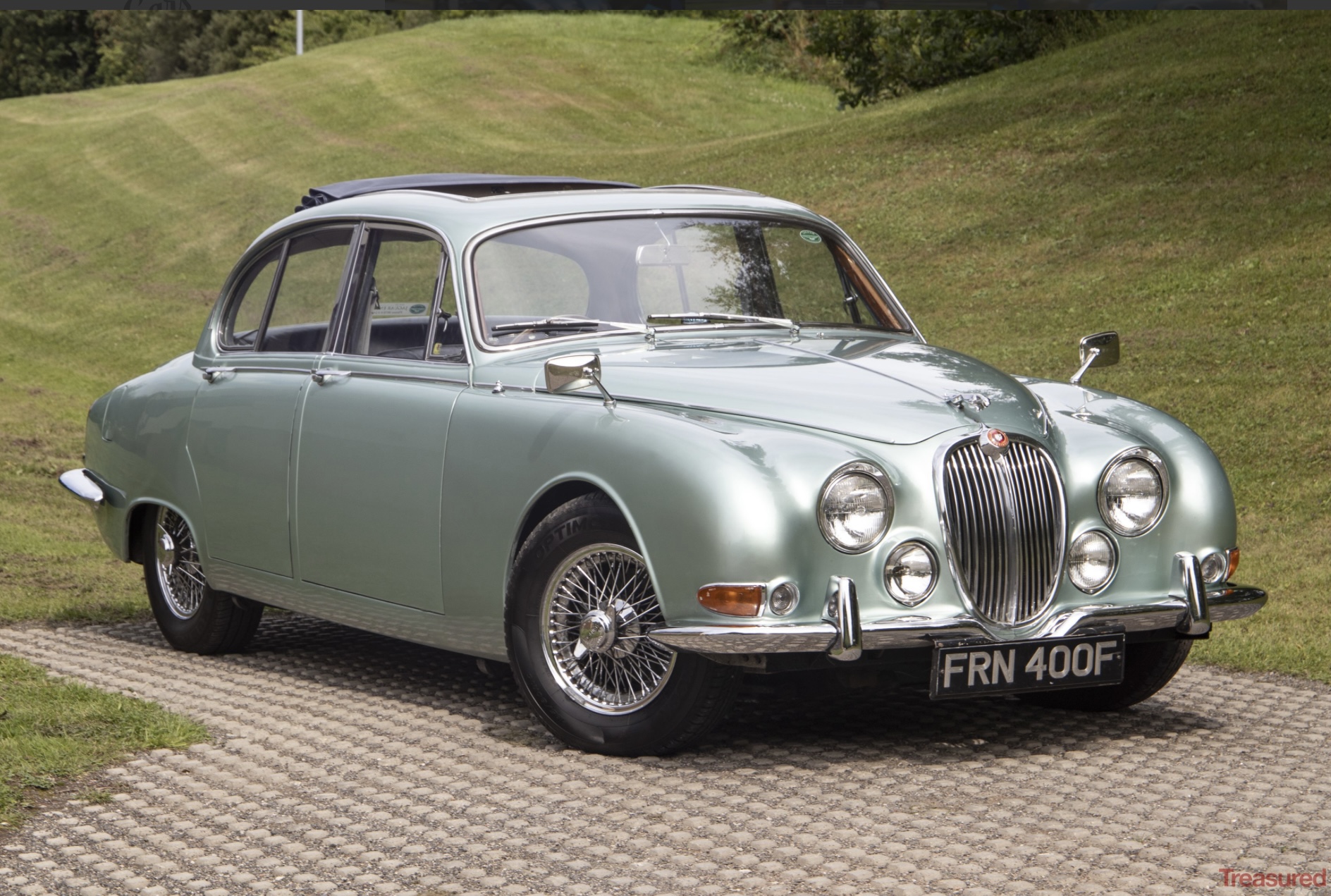
Engine Excellence: The Heart of the Jaguar S-Type.
- 0 - 60 mph:
- 3.4 Litre Saloon - 13.9 seconds.
3.8 Litre Saloon - 10.2 seconds. - Top Speed:
- 3.4 Litre Saloon - 119 mph.
- 3.8 Litre Saloon - 121 mph.
The 3.4-liter engine, a refined iteration of its predecessor, brought a balance of power and sophistication. Producing a commendable output, it catered to drivers seeking a spirited ride without compromising on refinement. The smooth power delivery and agile performance made the 3.4-liter an appealing choice for those who valued a harmonious driving experience.
On the other hand, the 3.8-liter engine elevated the S-Type's performance to another level. With a larger displacement, it unleashed a surge of power that appealed to enthusiasts with a penchant for exhilaration. The 3.8-liter engine provided an additional dose of adrenaline, ensuring that the S-Type was not merely a luxury sedan but a thrilling driving machine.
Interestingly, the decision not to include triple carburetors, which were a hallmark of performance cars of that era, was a deliberate one. Instead, the S-Type opted for twin carburetors, emphasizing a blend of power and practicality. This choice enhanced drivability and maintenance without sacrificing the exhilaration that the S-Type promised on the open road.
Both engines were paired with a smooth-shifting manual transmission or an optional automatic gearbox, allowing drivers to tailor their S-Type experience according to their preferences. The 3.8-liter variant, in particular, became a favorite among those who craved the fusion of luxury and high-performance driving.
In essence, the engine choices for the 1960s Jaguar S-Type exemplified the meticulous balance struck by Jaguar between power, refinement, and practicality. Whether it was the spirited drive of the 3.4-liter or the exhilarating performance of the 3.8-liter, each engine option added a distinct flavor to the S-Type's legacy, making it a timeless classic for enthusiasts who value the artistry of automotive engineering.
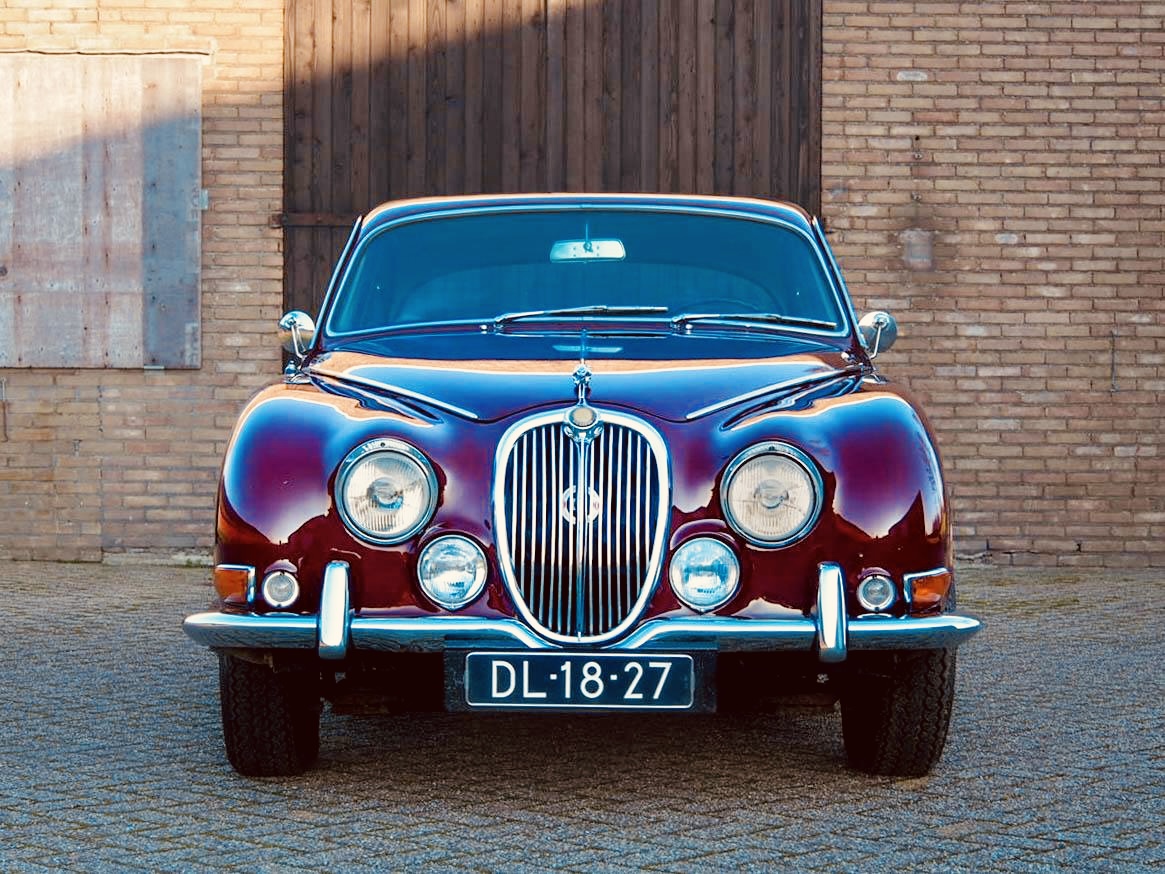
Production numbers
Jaguar S-type 3.4 total production ; 10,036
Jaguar S-type 3.8 total production;15,135
S-Type Jaguar total production; 25,171 cars, (6,789 LHD)
Optional Extas
The base cars came with some interesting options in the 60’s including;
- Choice of three radio installations with or without rear parcel shelf-mounted speaker
- Laminated windscreen
- Witter tow bar
- Front seat belts
- Choice or radial, town and country, or whitewall tyres
- Borg Warner automatic transmission
- Overdrive (for non-overdrive-equipped manual transmission cars)
- Wire wheels with conversion kit for hubs, etc
- Fire extinguisher
- Sundym tinted windscreen and side windows
- Wing mirrors
- Integrated ignition/starter to steering column
- Power-assisted steering
Both the Police and Criminals saw the Appeal:
Law enforcement recognized the S-Type's prowess, utilizing it as a police vehicle. Simultaneously, its speed and agility attracted the attention of criminals seeking a fast getaway vehicle, creating a unique duality in its reputation.
Celebrities and Racing Pedigree:
While the E-Type often took the spotlight, the S-Type found favor among celebrities for its understated elegance. Its racing pedigree, though less emphasized, showcased its capabilities on the track, proving it wasn't just a luxury sedan.
Classic Car Status and Investment:
The Jaguar S-Type has cemented its status as a classic car, and its demand continues to rise among collectors. As an investment, its timeless design, racing heritage, and limited production contribute to its allure.
Buyer's Guide:
For enthusiasts considering the Jaguar S-Type, careful inspection of the body, mechanical components, and interior is crucial. Verify the vehicle's history and maintenance records, ensuring that its timeless charm is matched by reliability.
Conclusion:
Much scarcer the it’s MK 2 cozen, the hard to find Jaguar S-Type remains a 1960’s automotive treasure, celebrated for its design, performance, and allure. Whether it's the allure of cruising in luxury or the thrill of the open road. A true treasured car, the S-Type encapsulates the essence of a bygone era, making it a wise investment for classic car enthusiasts.



